What to Bring to Your First Competition

Picture this. It’s 9 AM. The ground is wet with dew. You’re breathing in fresh morning air. The sun is rising in the sky. You are anticipating walking up to the firing line. Instead of thinking about the stage plan, you’re wondering if you packed what you need for your first match.
If you’re looking to shoot your first competition or match and are worried about what to bring, fear not. I’ve shot a few over the years, and today I'm going to give you a few good ideas of things to bring. At the end, I'll give a bulleted list so that you can take a picture with your phone as a checklist, or print it out. This list was created with USA pistol competitions in mind.
1․ Good attitude
I promise most of the rest of this list will be gear-related, but I have to include this first thing. Shooting competitions and matches in my area seem to be getting rarer and rarer. Most of the matches and competitions that I have attended would not have been possible without volunteers. I always feel really grateful when I'm able to attend a match or competition. The people organizing the events are usually not making a fortune, and are also taking on risk by allowing the public to shoot from holsters and on the move. Let’s not give the people running the match a hard time. If they decide to not put on a match in the future, it’s very likely that you’ll just have one less place to shoot. Treat your fellow marksman with appreciation and respect. I’m sure it will go a long way.
2․ Knowledge of the competition you’re shooting
Each competition or match may have a different rule book. The rule book will probably have differences in equipment divisions and scoring. For instance, USPSA will have different standards for holsters and firearms, and you will be scored differently than an IDPA match. Read through the rulebook and make sure the equipment you plan on bringing falls into some kind of category.
3․ Knowledge of the safety rules
In my experience, there are some universal safety rules. Most competitions require you to show up with an unloaded firearm in its own bag, and loaded magazines separate. Normally you are allowed to bring your unloaded firearm to a safe table to unbag, examine and holster. You are not able to bring ammunition to the safe table. You can work on your firearm at the safe table, but again there can’t be any ammo present. Most of the time you can not touch your firearm unless it’s your turn to shoot, or you’re at the safe table. Normally you can only load your firearm when it is your turn to shoot, and the Range Officer gives you the command to “load and make ready.”
There is also generally a 180 rule, where there is an imaginary 180-degree line. If the muzzle of your firearm points up range of the 180 line, it is considered unsafe and you are asked to leave the match. You can also never point your firearm at yourself or someone else, regardless of whether it is loaded or not. Try to brush up on all the safety rules for the competition you are planning to shoot. Some ranges will have their own rules as well, like not being able to bring the muzzle above the berm, etc.
When you first arrive, let the match personnel know that it’s your first time, and they’ll run you through the rules. If you’re ever in doubt, feel free to ask a Range Officer. They’re there to keep everyone safe, and I've never had a bad experience asking a safety question.
4․ Gun for the type of match you’re shooting
This one is pretty self-explanatory, but you want to bring a gun to shoot that fits into a competition division. Most matches have a division for the gun you want to bring. For instance, you can shoot open in USPSA with just about any 9mm centerfire handgun. You obviously can’t shoot a USPSA target with birdshot out of a 12 gauge pump though. You also wouldn’t want to bring a 9mm to a rimfire match. Know the gun you want to bring to the match and check the rule book to see where it would fit in. The rule book will usually sort firearms by their type, action, caliber and attributes (i.e. whether they have a compensator or not).
If it’s your first match, I would just pick a firearm that you already have and pick a division that the gun falls into. I brought an HK VP9 with iron sights to my first match and chose Production in USPSA. There were a ton of rules, and I really should have just chosen Open as my Division. I definitely wasn’t going to win in either Division. Also just as a general rule, I wouldn’t recommend bringing a revolver to a match where people mainly compete with semi-auto pistols unless you are really good at reloading really fast.
5․ Magazines
You want to bring enough magazines so that you can complete the course of fire. Reference the rule book to make sure the magazines you are bringing are legal for the division you are shooting. Some competitions have length restrictions etc.
6․ Belt
If required, you will want to bring a belt that can support a firearm. In some rimfire matches, the pistol is in a case until ready to shoot, but most other competitions require a belt and holster. If your belt was bought at a department store and curls like a happy face when you put a holster on it, you might not want to use it. These belts can twist and sag. At best it’s an inconvenience and leads to a slower draw. At worst it can be dangerous. I’m not recommending you buy the best competition belt money can buy out of the gate, but make sure you use the sturdiest belt you have available. Also, some competitions will allow you to use a competition-specific 2-piece belt, while others will require you to use an everyday belt.
7․ Holster
If your match or competition requires a holster, I'm going to recommend you bring one that is made of either լeather or Kydex and is custom fit for the gun you are competing with. Some competitions disallow the use of nylon holsters or have specific requirements regarding the position of the holster (i.e. butt of the handgun needs to be above the belt, the distance from the inside of the holster to the belt, etc.). It’s tough to recommend a holster because there are so many different competitions with holster restrictions, but I would say if you have a decent holster already that’s leather or Kydex and it meets the rule book, use it. You can always buy new gear once you get your feet wet and see which competition is for you. Also, don’t bring a shoulder holster.
8․ Magazine pouch
If required, you’re going to want some way to hold your magazines. Check with the rule book to make sure what you have is legal. I used a cheap magazine holster when I was beginning, and used my pockets as well. If you’re doing steel challenge, you may not need any magazine holsters. If you’re shooting a division that requires you to only load your magazines to 10 rounds, and each stage requires you to shoot 60 rounds, you may want to have a lot of magazine holsters. Some competitions have distance requirements from the holster and other requirements. The main thing is you don’t want to be disqualified or run out of ammo in a match.
9․ Ammunition
Bring the appropriate ammunition to the match. Some ranges will allow steel-case ammo, but most require the ammo to be brass-cased. Make sure you have enough ammo to account for the match, and any missed shots, or re-shoots. It’s always better to bring too much ammo than not enough.
10․ Ear Protection
Ear protection is a must. I personally use Walker Razor electronic ear muffs. I’m going to recommend using some type of electronic earmuff. The electronic ear muffs will allow you to hear what others are saying, while also protecting your hearing from gunshots. You need to hear all commands from the RO, the start beeper, and will also probably want to talk to others while you’re not shooting. You can also use foam disposable ear protection in addition to the electronic ear muffs, to double down on the hearing protection. I will usually do this at indoor ranges. It’s also recommended in case your hearing protection falls off mid-match.
11․ Eye Protection
You need some type of eye protection. If I'm shooting outdoors, I will usually just use sunglasses rated to ANSI Z87.1. If I'm shooting indoors, I'll use 3M safety glasses. Know that not all safety glasses are created equal. There are different MIL and ANSI standards that manufacturers will use to test safety standards. I’m going to recommend you use the best eye protection you have available. The lenses that meet military ballistics standards are going to perform much better than the mystery safety glasses you get from the gas station that could shatter in your eyes. Safety glasses are important in the unlikely event that something goes catastrophically wrong, but also prevent you from getting brass pieces and carbon in your eyes while shooting.
12․ Chamber flag
Some competitions require the use of chamber flags.
I think what we’ve discussed so far are all things that you can’t forget, but there are a few other things I can mention that are really nice to have::
1․ Magazine speed loader: Hopefully you’re going to be able to shoot a lot of rounds in your match. This is going to require topping off magazines several times. Save your thumbs. Bring some type of loader.
2․ Sunscreen: If you’re shooting outside, it’s usually a good idea to bring some sunscreen so you don’t burn.
3․ Hat: Keep the sun off of your face and out of your eyes with a nice hat.
4․ Snack/water: Sometimes matches can go on for a while. It’s nice to have some water after a stage.
5․ Cart or range bag: I brought everything with me in a backpack for my first few matches. It worked out well until I had to set my backpack down in the mud. A nice cart allows you to not have to set your gear in water or mud.
6․ D-Lead Wipes: When you shoot a lot or are at an area where a lot of shooting happens, lead particles can be released into the air and settle on you and your hands. You can ingest this lead when you are eating, or transfer it to other places when you get in the car or get home. I like to keep my lead consumption to a minimum, so having some D-lead wipes on hand ensures my hands will be clean when I have that snack.
7․ Spare batteries: If you are shooting a match with optics, it’s generally a good idea to have a spare battery for the optic on hand.
8․ Manuals: It’s usually a good idea to keep the manual for your firearm with you while competing, along with the manuals to any optics or accessories in case they go down.
9․ Tools: You may want to bring some tools along. I usually keep a multi-tool, and any bits required for optics zeroing, firearm disassembly, magazine and holster screws, and anything else you can think of.
10․ Loctite: When I get new competition gear like holsters or magazine holders, I usually Loctite them immediately because they always seem to get loose at the worst moment. I usually bring a little tube of blue loctite with me to the match as well.
11․ First aid kit: I’ve had to use a few band-aids at the range before.
12․ Rain gear if needed: I’ve never had to use rain gear, but if you have some might as well bring it.
13․ Gun lube/cleaning supplies: You definitely don’t want to be mid-match when your firearm needs a drop of gun oil.
14․ Any medications you may take: I usually bring some Tylenol or ibuprofen, and some allergy eye drops.
Full List:
- Good attitude
- Knowledge of the competition you’re shooting
- Knowledge of the safety rules
- Gun
- Magazines
- Belt
- Holster
- Magazine Pouch
- Ammunition
- Ear Protection
- Eye Protection
- Chamber flag
- Magazine speedloader
- Sunscreen
- Hat
- Snack/ water
- Cart or range bag
- D-Lead Wipes
- Spare batteries
- Manuals
- Tools
- Loctite
- First aid kit
- Rain gear if needed
- Gun lube/ cleaning supplies
- Any Medications you may take
Conclusion
While no one can assess your needs quite like you can, I hope the above list covers most everything that you may need to shoot your first match or competition. When you’re at the match, shoot well, don’t get disqualified, don’t create an unsafe environment and have fun. Good luck and may the spirit of John Wick be with you.

Lifelong firearm enthusiast with a passion for shooting handguns. 12+ year concealed carrier. Shooting competition enjoyer.
More by Cameron H













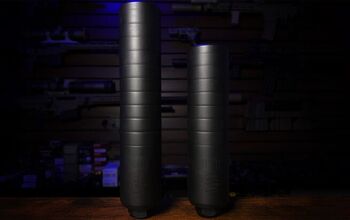

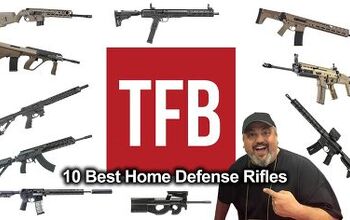


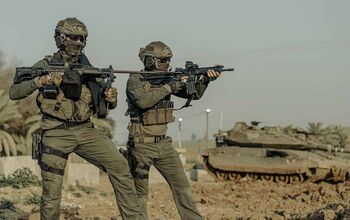
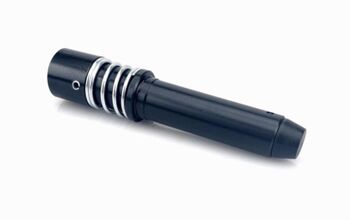


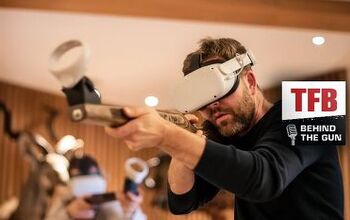
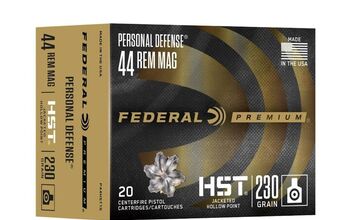

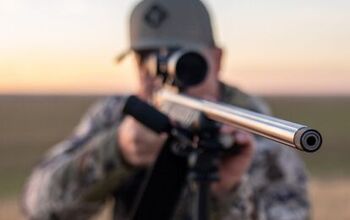


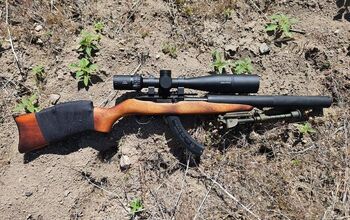
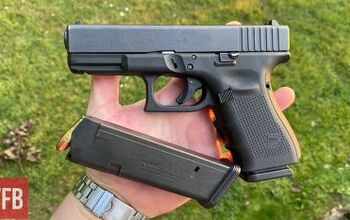

Comments
Join the conversation
A lot of the PPC shooters around here, carry all their stuff in a 5 gallon plastic pail.
Just dig around and grab the accessories you need and strap them on.
I’d recommend a small folding stool as it can be a long day. I bring liquid chalk and a small towel. I keep all my gear in a Nanuck range box in my rolling cart in case it rains, otherwise pack a big garbage bag to cover up. Optics covers if you run an open emitter dot for dust or rain. Water is good but I use something with electrolytes for long matches. Easily digestible energy/protein bars . Knee pads maybe a good idea. On possibly cold days - hand warmers. Guys bring neck fans for hot days. Magazine brush for muddy days. Some work gloves in case you want to help tear down after a local match - that’s always appreciated !